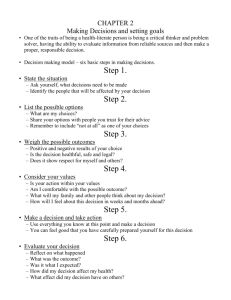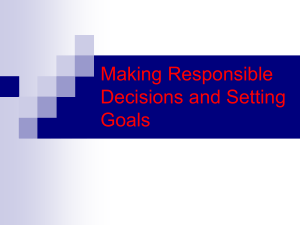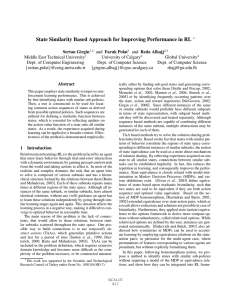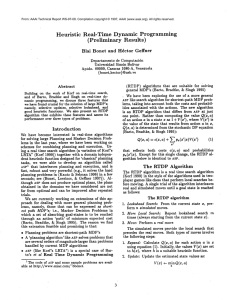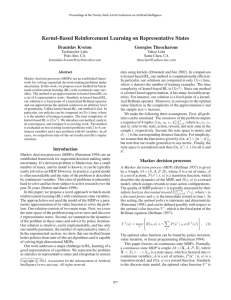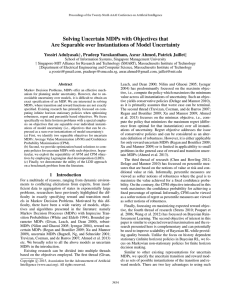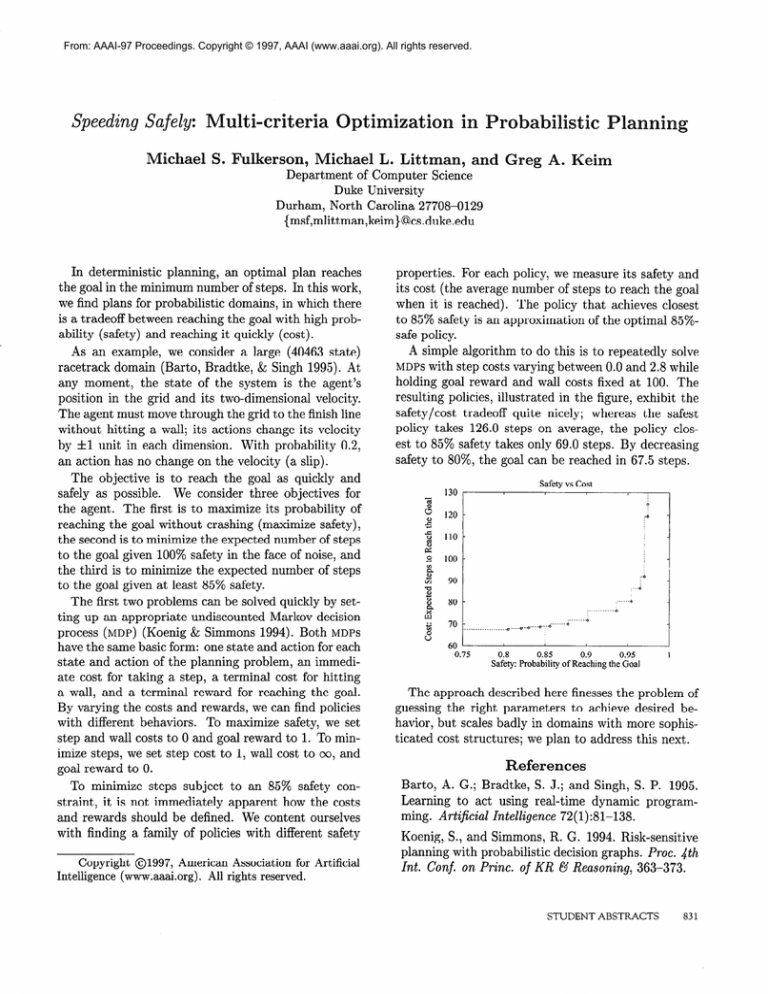
From: AAAI-97 Proceedings. Copyright © 1997, AAAI (www.aaai.org). All rights reserved.
Speeding Safely: Multi-criteria
Michael
S.
Qpti
Ikerson, Michael
L. Littrnan,
and Greg A. Keim
Department of Computer Science
Duke University
Durham, North Carolina 27708-0129
{msf,mlittman,keim}@cs.duke.edu
In deterministic planning, an optimal plan reaches
the goal in the minimum number of steps. In this work,
we find plans for probabilistic domains, in which there
is a tradeoff between reaching the goal with high probability (safety) and reaching it quickly (cost).
As an example, we consider a large (40463 state)
racetrack domain (Barto, Bradtke, & Singh 1995). At
any moment, the state of the system is the agent’s
position in the grid and its two-dimensional velocity.
The agent must move through the grid to the finish line
without hitting a wall; its actions change its velocity
by fl unit in each dimension. With probability 0.2,
an action has no change on the velocity (a slip).
The objective is to reach the goal as quickly and
safely as possible. We consider three objectives for
the agent. The first is to maximize its probability of
reaching the goal without crashing (maximize safety),
the second is to minimize the expected number of steps
to the goal given 100% safety in the face of noise, and
the third is to minimize the expected number of steps
to the goal given at least 85% safety.
The first two problems can be solved quickly by setting up an appropriate undiscounted Markov decision
process (MDP) (Koenig & Simmons 1994). Both MDPS
have the same basic form: one state and action for each
state and action of the planning problem, an immediate cost for taking a step, a terminal cost for hitting
a wall, and a terminal reward for reaching the goal.
By varying the costs and rewards, we can find policies
with different behaviors. To maximize safety, we set
step and wall costs to 0 and goal reward to 1. To minimize steps, we set step cost to 1, wall cost to 00, and
goal reward to 0.
To minimize steps subject to an 85% safety constraint, it is not immediately apparent how the costs
and rewards should be defined. We content ourselves
with finding a family of policies with different safety
Copyright 01997, American Association for Artificial
Intelligence (www.aaai.org). All rights reserved.
properties. For each policy, we measure its safety and
its cost (the average number of steps to reach the goal
when it is reached). The policy that achieves closest
to 85% safety is an approximation of the optimal 85%safe policy.
A simple algorithm to do this is to repeatedly solve
MDPS with step costs varying between 0.0 and 2.8 while
holding goal reward and wall costs fixed at 100. The
resulting policies, illustrated in the figure, exhibit the
safety/cost tradeoff quite nicely; whereas the safest
policy takes 126.0 steps on average, the policy closest to 85% safety takes only 69.0 steps. By decreasing
safety to 80%, the goal can be reached in 67.5 steps.
Safety vs Cost
“m
s
130
?
,A
120 -
-
2
AZ
0
d”
s
110
100
t
60 ’
0.75
I
0.85
0.8
0.9
0.95
Safety: Probability of Reaching the Goal
The approach described here finesses the problem of
guessing the right parameters to achieve desired behavior, but scales badly in domains with more sophisticated cost structures; we plan to address this next.
References
Barto, A. G.; Bradtke, S. J.; and Singh, S. P. 1995.
Learning to act using real-time dynamic programming. Artificial Intelligence 72(1):81-138.
Koenig, S., and Simmons, R. 6. 1994. Risk-sensitive
planning with probabilistic decision graphs. Proc. 4th
Int. Conf. on Print. of KR & Reasoning, 363-373.
STUDENT ABSTRACTS
831



